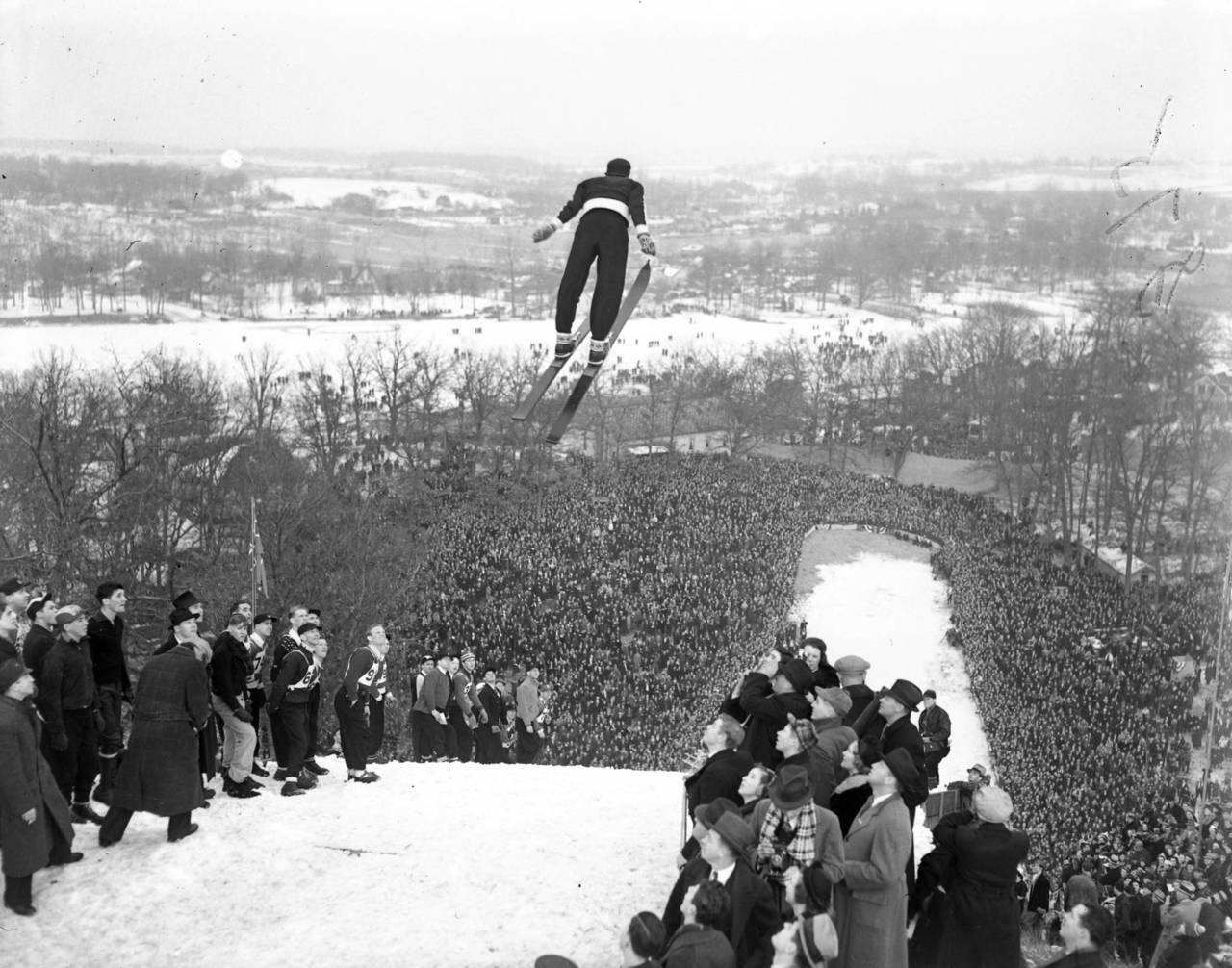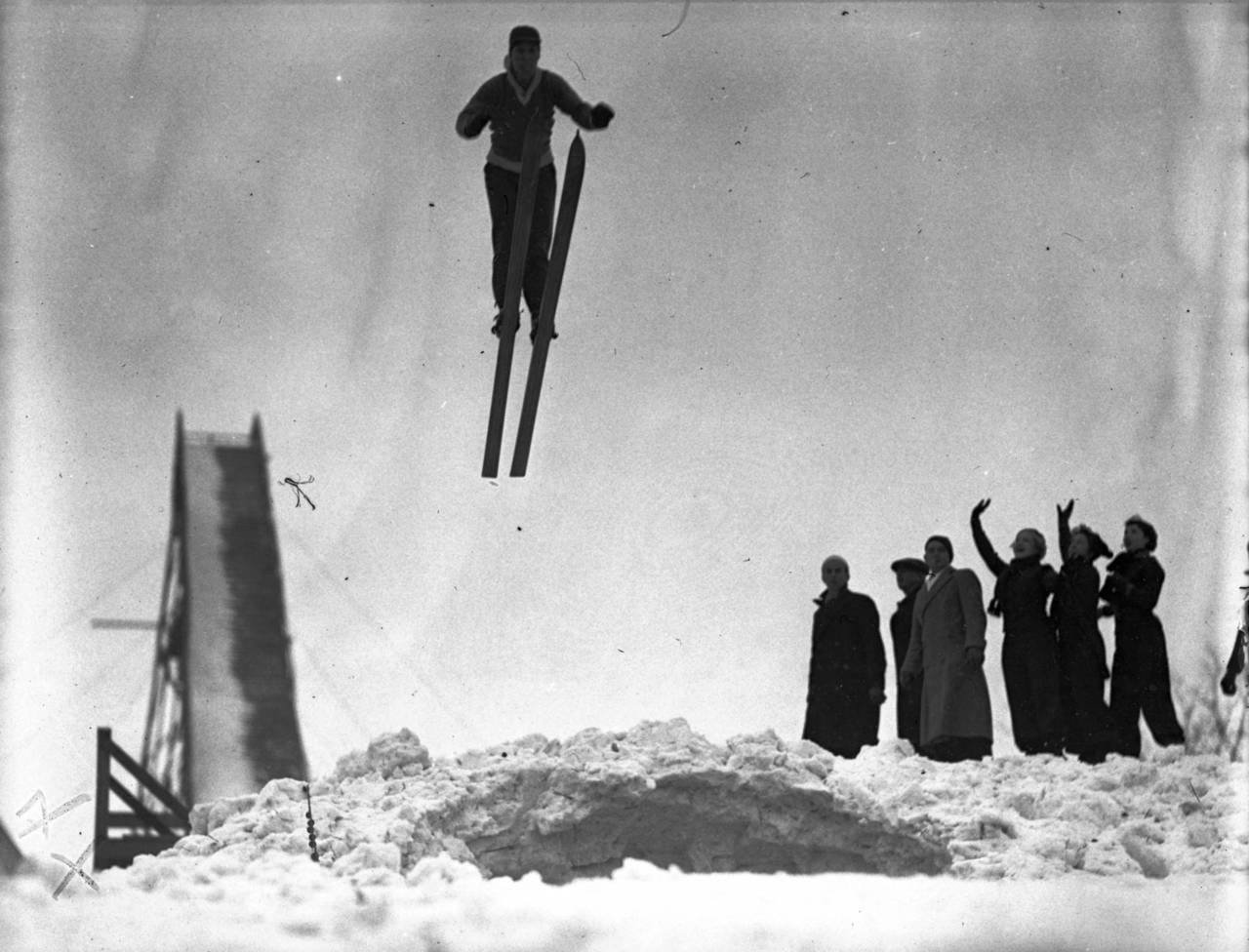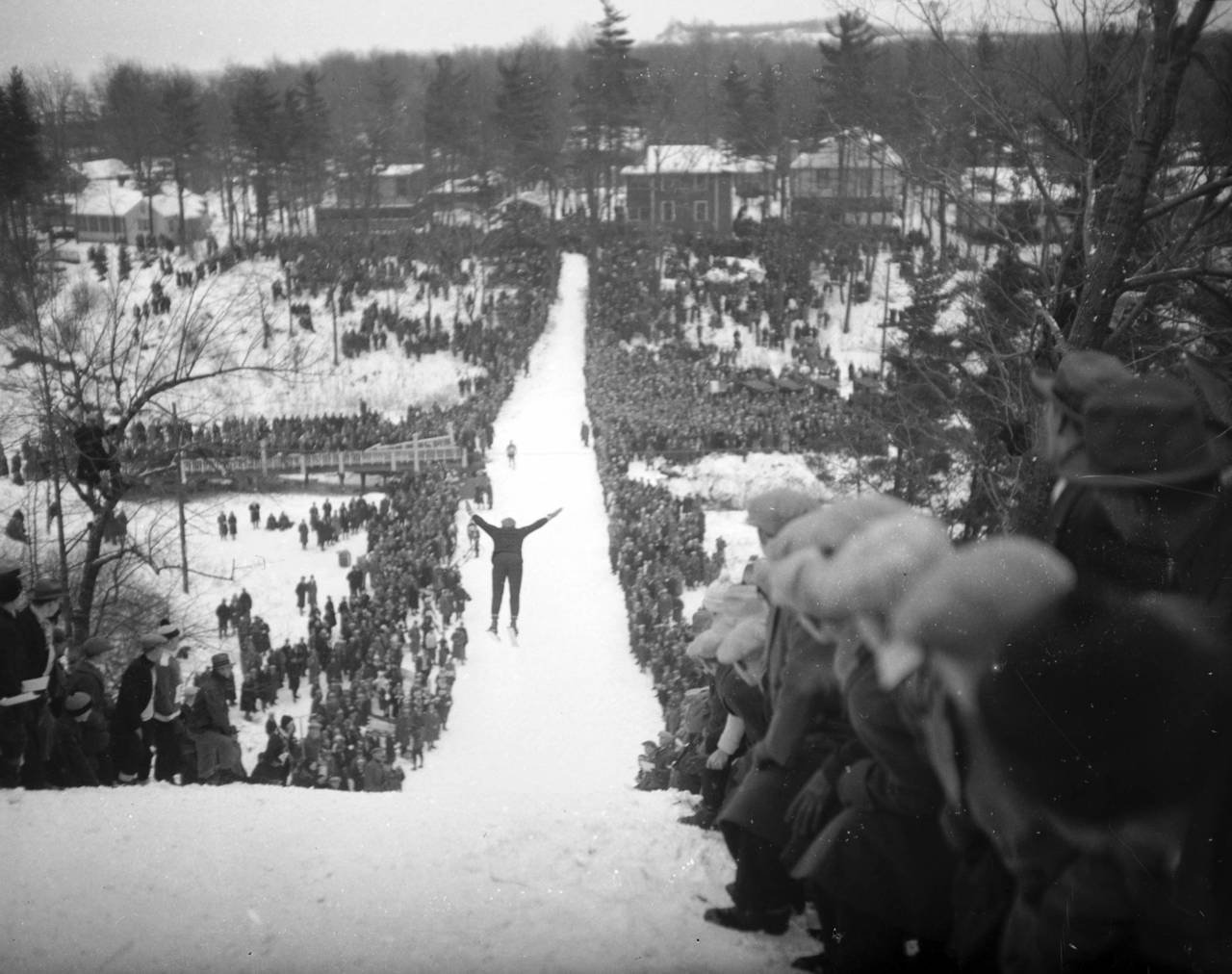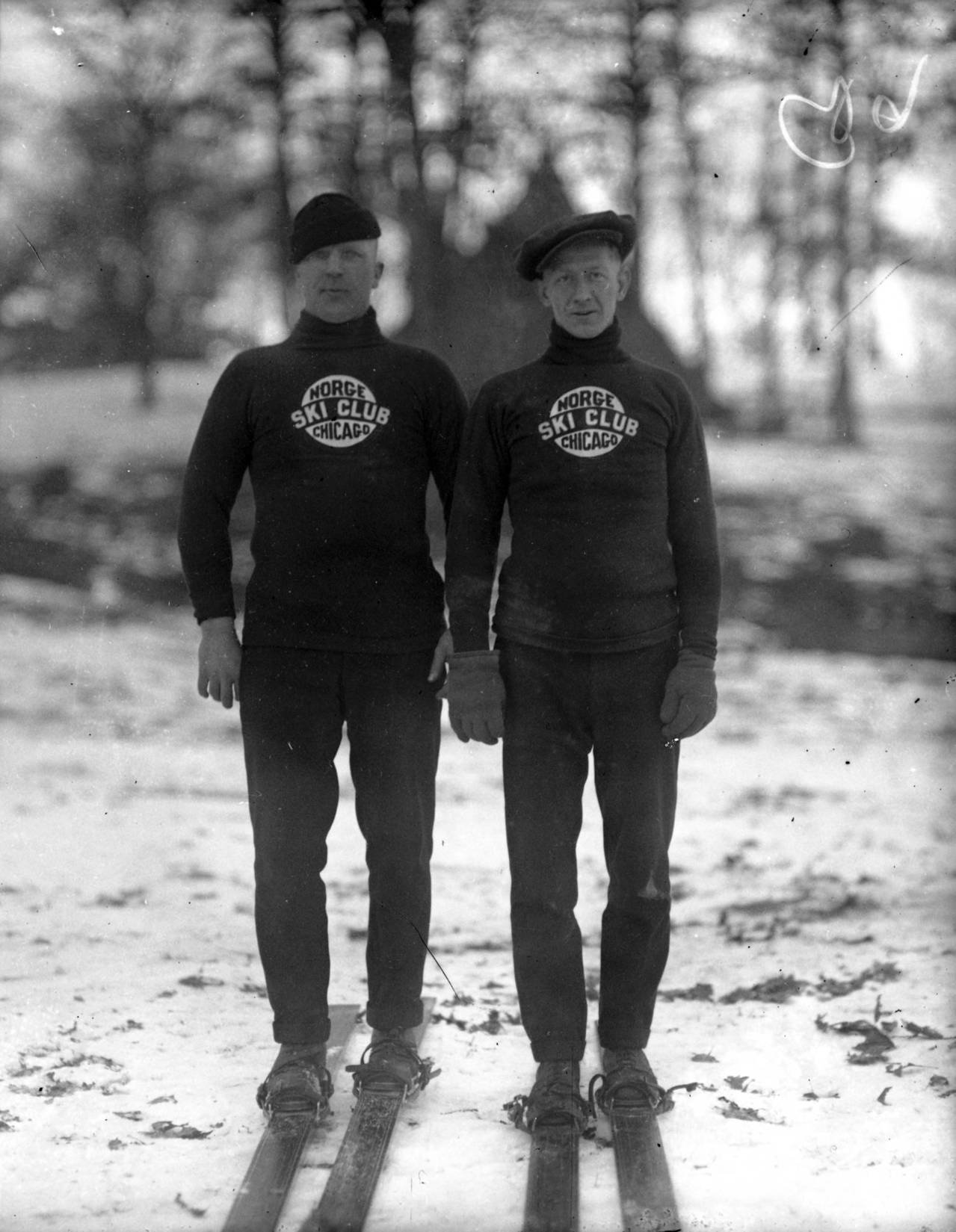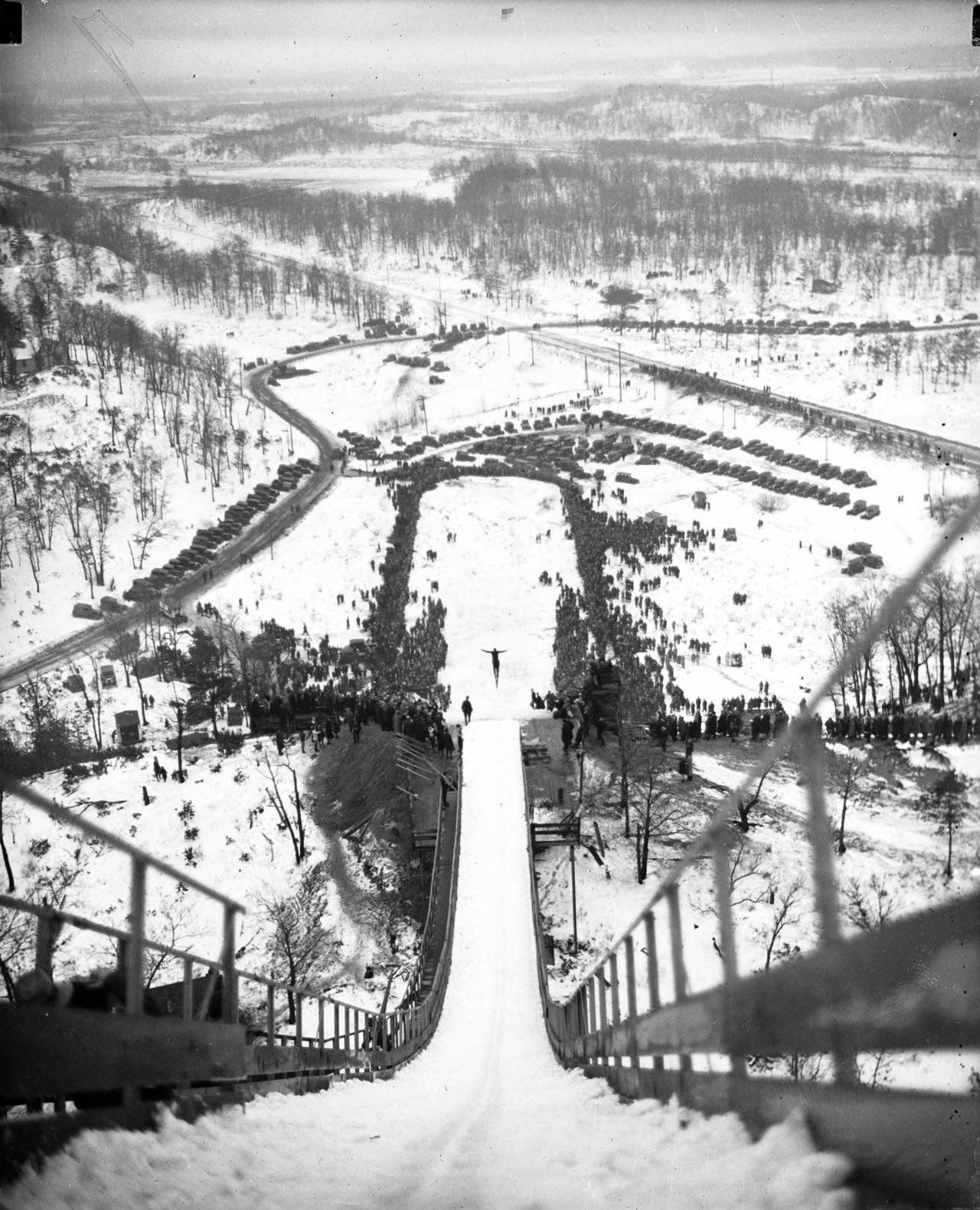Flying at Norge in Fox River Grove
Ski jumpers are part of a long tradition dating back to 1809 in Norway.
By Patrick King
Photos: Chicago Tribune
Altitude: 150 feet. Location: Norge Ski Club in Fox River Grove.
Flight suit and equipment secure? Check. Your launching facility is a 232-foot-long ramp — one that ends very abruptly.
From your vantage point, you can see the Chicago skyline, although when you look down, you can’t even see your landing zone. Once you commit to takeoff, there’s no turning back. A signal is given and it’s your turn to fly. You push yourself off and begin what is called the in-run, and it’s a good one, for the ramp is super slick, just the way you like it. At 20 mph, you’re gaining speed, at 30 mph, your skis begin to sing a vibrating tune, at 40 mph, in a moment you will be launched like an aircraft carrier leaving the flight deck, and at 50 mph, it’s takeoff! You rocket into the air, you are now flying!
Your jumping skis, and especially your form, will make this a good flight. With ski tips spread like a V, and arms at your side serving as wing flaps for steering, you break the bonds of gravity, but only momentarily, for gravity is now pulling you down, down to a hill that seems steeper than the ramp you just left. Down, down you go, then, touchdown. You land in the telemark position, one leg before the other, with knees bent to serve as shock absorbers. It’s a perfect landing. You glide to a stop in the out-run area, knowing you are part of an elite flying club: the ski jumpers at Norge (pronounced “nor-geh”).
TIME-HONORED SPORT
Ski jumpers are part of a long tradition dating back to 1809 in Norway. When ski-jump-loving Scandinavians immigrated to America, largely in the upper Midwest, they brought their sport with them.
By the early 1900s, ski jumping was all the rage from coast to coast. If your state had snowfall, it had a ski jump. It was during this period, in the summer of 1905, that a group of Norwegians from Chicago traveled northwest to McHenry County looking for the highest piece of land and finding it in what was soon to become Fox River Grove. That November, the land was secured at $15 a year rent and work began constructing cottages where workers could stay while they built the club grounds. By 1908, Norge’s clubhouse opened, and in 1911, construction of a wooden ski jump was completed. Unfortunately, the jump was destroyed during a violent August storm.
Undaunted, the club built an even bigger tower and was ready for their first national tournament held in January 1912, never surmising that someday their ski jump would attract crowds of up to 50,000 spectators. That January event is now the oldest continuously held ski-jumping tournament in North America.
THE GOOD OLD DAYS
In 1925, the club purchased the hill and 38 acres for $38,000. Soon the crowds were arriving from Chicago and the suburbs to see tournaments. In 1932, a contract was awarded to build a road to the ski hill, appropriately dubbed Ski Hill Road.
By 1950, Norge Ski Club had the distinction of being the first International Ski Federation (ISF) jump held in America (the ISF governs world, international and Olympic tournaments). There was just one problem — no snow, and there was none that could be brought in from Wisconsin or Michigan, as was done in the 1920s and 1930s via Chicago Northwestern Railroad boxcars.
A few phone calls later, the Jefferson Ice Co. went to work grinding tons of ice. Norge members secured some blowers and spread the shavings on the run and hill. The tournament went on without a hitch and Norge Ski Club gave birth to a new innovation: synthetic snow.
During the ’40s and ’50s, Norge was now seeing tournament crowds of 30,000 to 50,000 spectators. Competitions were being held everywhere and anywhere: on temporary ramps, at golf courses, indoor arenas, almost any facility imaginable — even Soldier Field in Chicago.
The Soldier Field jump, with its 194-foot tower, was constructed the summer of 1954 and sponsored by the Norge Ski Club. The surface was covered with shaved or crushed ice.
AN UPHILL BATTLE
During the late ’50s and into the ‘60s, rules, regulations and escalating costs ended tournament spectaculars like Soldier Field. Marketers and sponsors turned their monetary attention toward more accessible sports like Alpine skiing. Attendance at the Norge meets slowly dropped to around 8,000. Then in 1973, disaster struck — the ski jump burned.
But a phoenix rose from the ashes. Through hard work and fundraising, the jump was rebuilt and jumping resumed in 1981.
A FACILITY FOR THE NEW MILLENNIUM
The mid-’80s introduced something entirely new to the Norge Ski Club — artificial snow mats from Finland. These mats — constructed of polyethylene bristles like those used on large city street sweepers — allowed jumpers to practice all year long. Plastic and a mist of water made the run nearly like snow. This innovation, however, came at a very steep price of $60,000 — that’s about $140,000 in today’s dollars.
In 1999, club members built a new 2,000-square-foot clubhouse, complete with a bar, dining area and large windows to view the ski jumpers flying down the hill.
The lower level provides a meeting area and school where young skiers are taught the basics of ski jumping and those already jumping can review/critique their performances on video.
In 2004, a magnificent 72-meter (236-foot) jump tower was purchased in Ely, Minn., loaded onto 17 flatbed trucks and brought to Norge. The rusty, old 60-meter tower was removed, and in two months, local steel workers erected the new tower. New snow mats were installed. The old mats were transferred to the 47-meter hill.
In 2009-10, the club added a new, small hill complex, which is fantastic for beginners of all ages. This brings their total to five jumps, which include 5-, 10-, 22-, 47- and 72-meter jumps.
Norge’s most recent upgrade, a totally enclosed, state-of-the-art, five-place judges tower, was constructed in 2011 by dedicated and talented volunteers. To the right of the large jump is a steel observation tower build for and by ABC camera crews.
NORGE TODAY
These days, children as young as 4 years old and folks through their 70s can learn and practice ski jumping. The jumps are illuminated for summer and winter evening teaching and practice runs.

